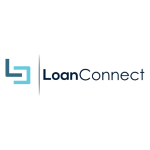The 6 Best Ways to Finance a Car in Canada
By Heidi Unrau | Published on 02 Feb 2024

Discovering the best way to finance a car in Canada can feel like a rough ride down a pothole-infested street. Purchasing it outright with cash is ideal, but who has $66,000 just lying around? Loans and leases are the most common ways to finance a car purchase. But things get a little complicated when it comes to choosing the right type of loan, lender, or lease agreement for your situation. So let’s explore the best ways to finance a car in Canada. Whether you’re a first-time car buyer or have less-than-perfect credit, we’ve got you covered.
With a Car Loan From Your Bank or Credit Union
This is the traditional way to finance a car in Canada, especially for people who want to own the car outright at the end of the term. Your bank or credit union knows you better than your TiTok followers. So they tend to offer better interest rates and terms, especially if you have a good credit score.
Just don’t rest on your laurels. They might not have the best rate out there. It’s important to compare loan offers from different banks and credit unions. This will help you find the right loan terms for your situation. Even if you love your financial institution, loyalty could cost you thousands in interest charges.
With a Home Equity Line of Credit (HELOC)
For homeowners with equity, using a home equity line of credit (HELOC) can be the best way to finance a car in Canada – especially if you want payment flexibility. HELOCs usually offer lower interest rates than car loans or personal loans which can lead to significant savings if managed appropriately. They can also allow you to make interest-only payments, which can give you wiggle room should something unexpected happen.
A HELOC is a revolving credit line secured against your home’s equity. This allows you to borrow funds for things like home renovations, debt consolidation, and even a car purchase. But there is a major drawback to consider: failing to make payments can result in losing your home if the lender decides to foreclose on your property.
When using a HELOC to finance a car, you need to have an airtight repayment strategy. Unlike fixed-term car loans, you can repeatedly borrow against and repay a HELOC, similar to using a credit card. Ensuring a plan to promptly repay the borrowed amount is key to avoiding excessive debt accumulation.
Through the Dealership
In-house dealership financing, sometimes known as dealer financing, allows you to complete both the car purchase and financing at the dealership. It’s a one-stop-shop solution, with online dealerships like Clutch offering rapid online pre-approval.
Financing a car in Canada this way is particularly handy if your credit score is less than stellar. Dealerships tend to be more lenient with approvals. But there’s a trade-off: dealerships often charge higher interest rates due to the increased risk they take on. Plus, they might tack on extra fees or ask for a heftier down payment.
You also need to be aware of aggressive sales tactics, like getting you to focus on the monthly payment instead of the purchase price. And buyer beware: some promo offers aren’t actually deals, like zero percent financing.
With a Loan for Bad Credit
Even if your credit score is in the pooper, finding the best way to finance a car in Canada is still achievable with a bad credit car loan. These loans are designed for people with poor credit but typically come with much higher interest rates. If you’ve exhausted all other options, bad credit car loans offer a pathway to car ownership and an opportunity to rebuild your credit.
Before you sign on the dotted line, carefully review the terms to ensure it’s manageable within your budget. Research various lenders because each may have different criteria and loan terms.
These lenders look beyond your credit score and consider your income, employment history, and financial stability to determine eligibility. Strengthen your application by providing pay stubs, bank statements, and asset documentation. Then make a plan to payoff the loan off as quickly as possible.
Some of the top private lenders that work with credit-challenged people include:
Fairstone

Fairstone has provided loans to Canadians for nearly a century. It offers financing via 250 branches coast to coast. To work with Fairstone, prospective borrowers simply answer a few simple questions. Soon, you’ll get a quote that won’t affect your credit score. Loan amounts range from $500 to $60,000, depending on the situation.
Spring Financial

With Spring Financial, you can score a loan starting at 9.99% without a bank branch visit. Its Evergreen Loan program allows you to borrow, grow and repeat, rewarding you for improving your credit. Meanwhile, with the Foundation, you can build your credit while saving $750 in a year. This option also comes with a free credit score.
LoanConnect

Meanwhile, LoanConnect offers loan offers within a minute after you submit a thorough and simple online form. It lends car-buying funds of $500 to $50,000 with rates between 6.99-46.96%. Its flexible loan repayment terms range from three months to many years. Interest rates and fees may vary by province or territory.
With a Standard Car Lease
If you like to upgrade your car every few years, then you might want to consider a lease. Instead of using a loan to finance a purchase, a lease lets you “rent” the car for a defined period. Leasing a car comes with benefits like lower monthly payments and shorter terms, typically 2-3 years. That’s because you’re paying for the vehicle’s depreciation instead of its full market value.
Counterintuitively, leasing a car is the better financial move for most people, as long as you don’t have to drive excessively. There are penalties for exceeding your mileage limit and for excessive wear and tear.
With a Lease-To-Own Agreement
If you prefer to lease but your credit sucks, a lease-to-own program can be another creative way to finance a car in Canada. This alternative allows you to make regular payments with the ultimate goal of owning the car.
Lease-to-own options are more accessible than traditional loans because they typically forgo credit checks altogether. The main requirements are proof of identity, stable income, and sometimes residency or citizenship. These programs differ from standard leases because you end up owning the car at the end of the term. Lease-to-own programs are shorter, usually one to two years, and payments can be made weekly or bi-weekly.
On the downside, drawbacks often include a limited selection of cars to choose from and upfront costs like a downpayment and/or signing fee. And it probably won’t help your credit score at all since most lease-to-own providers don’t report to credit bureaus.
If this arrangement sounds good to you, you can secure this type of loan from Loan Canada or Edmonton Auto Loans.
Can You Afford to Finance a Car?
Before you start thinking about the best way to finance a car in Canada, you need to know what you can and cannot afford. Here’s how to determine your budget:
Assess Your Budget: Consider your income, expenses, and other obligations. Use a car loan calculator to run the numbers.
Follow the 20% Rule: Ideally, your monthly car payments should not exceed 20% of your monthly income. Adjust this based on your unique financial situation and other debts.
Factor in Additional Expenses: Include costs like insurance, fuel, and maintenance in your budget.
Insurance Costs: These vary based on age, driving history, and car type. Compare quotes from different providers and for different models.
Fuel Expenses: Consider your driving habits and choose a fuel-efficient model if you drive often.
Maintenance Costs: Allocate funds for regular upkeep and unexpected repairs.
How to Increase Your Chance of Approval
Some car financing options are harder to get approved for than others. To increase your chances of getting approved for a car loan, the best way to finance a car in Canada involves a few key steps:
Check Your Credit Score: Aim for a score above 650. If it’s lower, work on improving it first by paying bills on time and reducing debt. You can monitor your credit score for free with an app like Borrowell.
Stabilize Your Employment: Lenders prefer a steady income history. If you’ve recently changed jobs, wait a few months before applying. Some lenders require you to be with the same employer for at least 2 years.
Gather Proof of Income: Have documents like pay stubs and bank statements ready to show you have a stable income.
Compare Lender Offers: Explore various options from banks, credit unions, and private lenders to find favourable terms and interest rates.
Save for a Down Payment: The larger your down payment (ideally 20% or more of the car’s value), the better your chances of approval and the lower your monthly payments will be.
The Bottom Line
When it comes to financing a car in Canada, various options suit different financial situations. From traditional bank loans to rent-to-own programs, consider your goals and priorities before making a decision.
Remember to research, shop around, and compare offers from multiple lenders so you get the best deal. Take the time to understand the terms and conditions thoroughly.
Finally, don’t hesitate to seek advice from financial professionals if needed. By taking a strategic approach, you can secure the best financing option for your car purchase in Canada.
